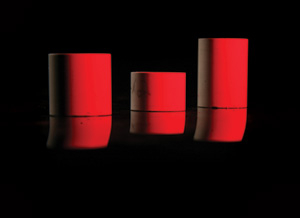
Participating Faculty:
Drs. J. Chen, Ji. Chen, D. Jackson, S. Long, D. Wilton
Website:
ael.egr.uh.edu
Electromagnetics deals with the study of electromagnetic fields and their engineering applications in antenna design, microwave circuits, and the scattering and interaction of electromagnetic waves with objects. At the University of Houston Cullen College of Engineering, the Applied Electromagnetics Laboratory (AEL) group is dedicated exclusively to this area.
Affiliated faculty members have established a collaborative environment within the group by jointly advising the lab's graduate students and collaborating on research projects, which include antenna design and development, numerical modeling of electromagnetic structures and radiation emissions.
The AEL group is working on several antenna design and development projects, including antennas that are specifically designed to eliminate or minimize surface and lateral wave radiation. Such structures can improve the efficiency of an antenna system and allow it to be used more easily as an element in an array. Previous work has been done to develop reduced surface wave microstrip antennas, and now similar techniques are being used to design a dielectric resonator antenna with similar reduced surface wave characteristics.
Other antenna work involves the use of metamaterials—materials not found in nature that, depending on their makeup, can have unusual electromagnetic properties. Such materials can be used for a variety of applications and to create antennas that have highly directional patterns, or that have properties that allow certain frequencies to radiate but not others. They could, possibly, be used to create arrays with fewer elements that are still very efficient.
The AEL is also working to make global positioning systems more accurate. GPS systems rely on the concept of an antenna phase center, which is the point where the radiation emitted by an antenna is assumed to originate, and is often not located on the antenna itself. Depending on the particular system, an antenna's phase center can be several meters away from the antenna itself. Although pinpointing a GPS unit's location within several meters is acceptable, some applications require far more accurate positioning. These include critical military systems and the docking of large cargo ships as well as docking maneuvers involving the space shuttles and the space station.
The second primary area of focus at the AEL is the numerical modeling of electromagnetically complex structures.
A powerful computational electromagnetics tool dubbed EIGER (Electromagnetic Interactions GEneRalized) has been developed in partnership with a variety of agencies, including the Lawrence Livermore National Laboratory, Sandia National Laboratories, NASA, the Navy's SPAWAR Lab and the consulting firm Advanced Numerical Tools and Services. EIGER can electromagnetically model large and complex structures, such as an entire Navy ship, and is constantly being updated to model even larger structures.
The AEL's third main research area involves electromagnetic emissions and their effects on human subjects and implantable medical devices. The group is conducting both experimental and numerical studies in this area. One specific topic is the design of an MRI machine compatible with implantable medical devices. More generally, the group is interested in how radiation encountered in everyday life, such as the radiation emitted by MRI machines and metal detectors at airports, affects people and those with implantable devices.
During the coming year AEL members will continue to investigate and develop technologies in the area of applied electromagnetics and pursue funding opportunities to continue and expand their research.